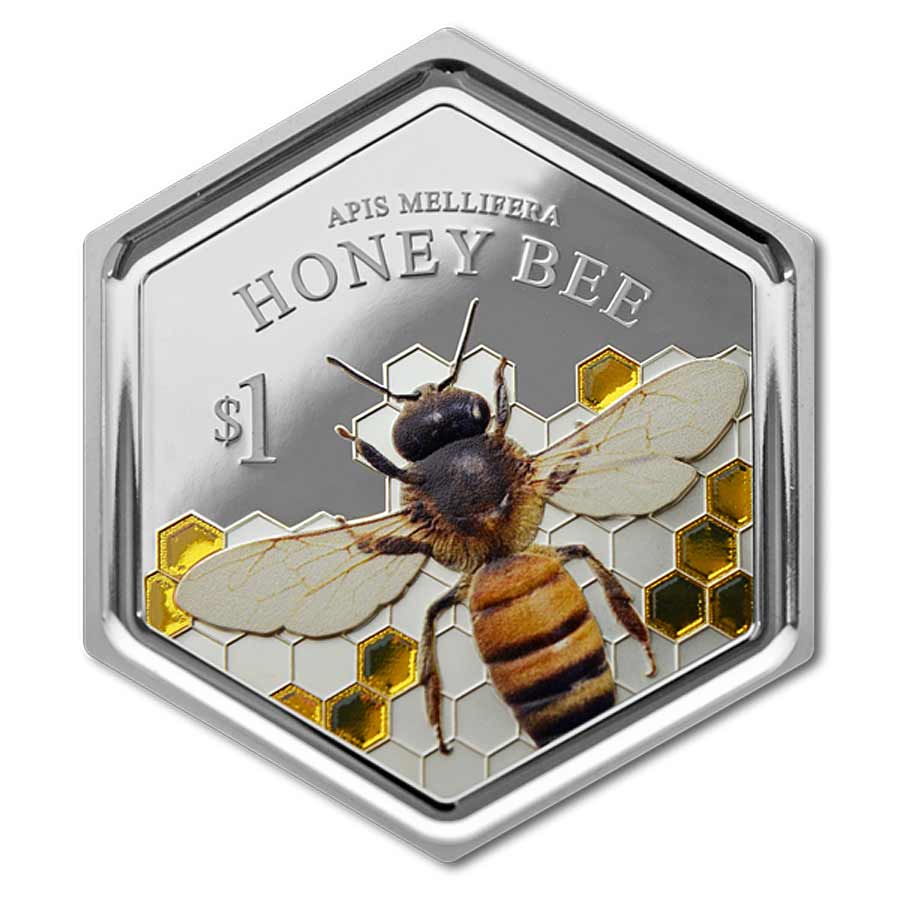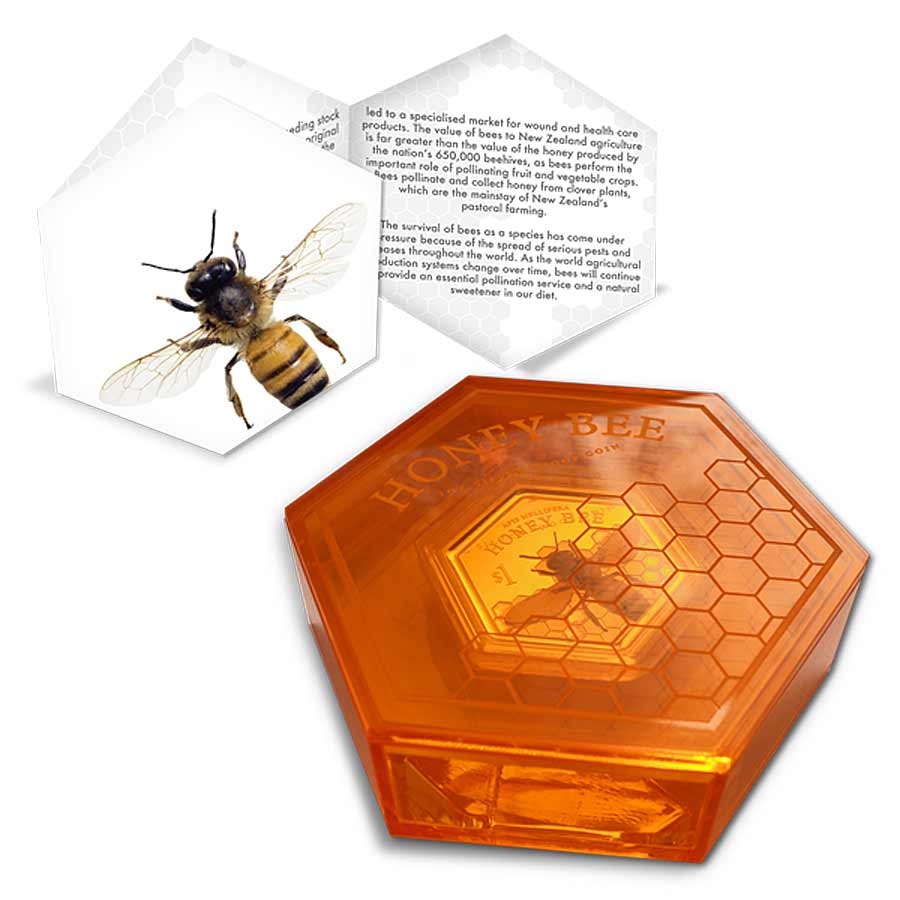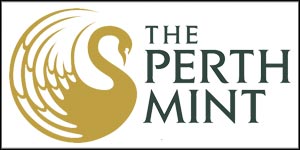The latest new coin from the New Zealand Post is now available, and it’s a good one. Featuring the Honey Bee, one of the most important creatures on Earth for humans, it looks primarily at this amazing insects association with honey and the hive.
Struck in fine silver, this one ounce coin is hexagonal in shape, meant to mimic the shape of the honeycomb cell. The main design depicts a bee in flight over a partial background of honeycomb, some cleverly filled with an amber resin meant to replicate the look of honey. It’s an innovative use of an adornment and far superior to just plonking a Swarovski crystal in the middle of the design. It has a point. The use of negative space, a large open area carrying no detail, actually gives the coin an enhanced dimensionality, and also helps keep the inscriptions off the primary design.
Inscriptions on the reverse face constitute the insects name in English and Latin, along with a minimal denomination. Everything else, issuer (New Zealand), date, head of state, are kept to the obverse where they surround the effigy of Queen Elizabeth II by Ian Rank Broadley. With the current popularity of rimless designs, it’s good to see a coin that not only has one, but has made it an integral part of the design, in this case the walls of a typical bee cell.
Overall, it’s a clever, attractive coin by artist Hannah Stancliffe-White, well worth a look. Packaging is also very clever, heavily inspired by the honey-filled cell so alluded to in the coin itself. A numbered Certificate of Authenticity is included in the box. At $149.00 NZD ($106 USD/£81/€96) it isn’t a cheapie, but there’s enough here, combined with a 1,500 mintage, to make it a great one for the animal coin collection. Struck by BH Mayer in Germany, it has a good pedigree. Available to order now.
COIN IMAGES
DESCRIPTIONS
MINT DESCRIPTION
The hexagonal shape of the coin is based on a cell of honeycomb in a hive. In the honey-making process, worker bees build a honeycomb structure of cells where nectar and pollen are stored, and larvae develop.
The honey bee is brought to life on the coin with three-dimensional engraving and colour printing. It’s depicted sitting on the honeycomb, which has been partially filled with translucent amber-coloured resin – replicating real honey!
Each coin includes a unique numbered certificate
HONEY BEE
Closely related to ants and wasps, Honeybees are social insects of the genus Apis. They’re most famous for their production and storage of honey, and for their importance in the pollination of plants. While there are only 7 species of Honey Bee (from a bee species roster exceeding 20,000), their domestication has made them ubiquitous and they’re found on every continent except Antarctica.
A bee hive is focused around a single queen, attended by hundreds of drones and thouands of workers. Workers forage for nectar and pollen from flowers, the former of which is used to produce honey. Stored in hexagonal cells and capped with wax to keep it fresh, the honey is consumed by the bees when needed.
Honey is a mix of water (80-95%) and sucrose (5-20%). A protein enzyme called invertase in the bees honey stomach, breaks the sucrose down into two components, fructose and glucose. When around 75% of the water has been dehydrated out of the new mixture, honey is formed. Honey, along with pollination, means bees are incredibly important to the ecosystem, and to the human food supply.
SPECIFICATION
| DENOMINATION | COMPOSITION | WEIGHT | DIMENSIONS | FINISH | MINTAGE | BOX / COA |
|---|---|---|---|---|---|---|
| $1 NEW ZEALAND | 0.999 SILVER | 31.1 g | 46.0 x 40.0 mm | PROOF | 1,500 | YES / YES |











I love the look of this coin, NZ mint usually does a great job at the presentation packaging as well, certainly in this case they have.
BH Mayer mint – not NZ mint.